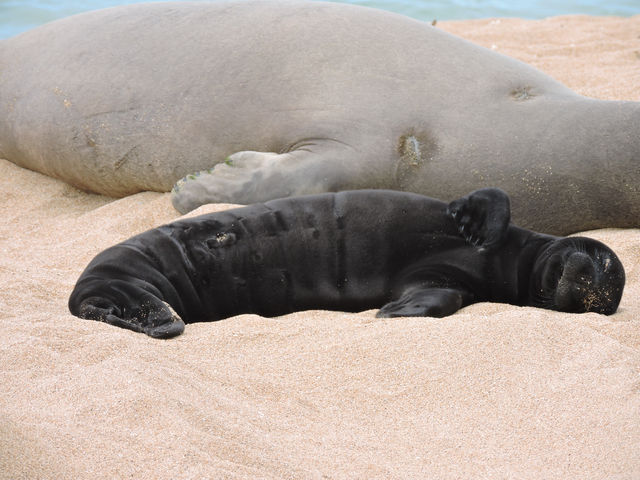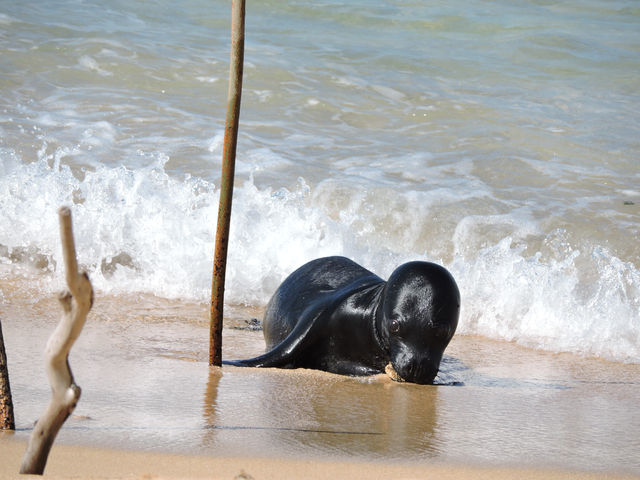Three baby seals have entered the world on Kauai’s shores this year, and Jamie Thomton, Kauai’s marine mammal response coordinator, said there shouldn’t be any more this season. “The rest of the mothers we are monitoring don’t appear to be
Three baby seals have entered the world on Kauai’s shores this year, and Jamie Thomton, Kauai’s marine mammal response coordinator, said there shouldn’t be any more this season.
“The rest of the mothers we are monitoring don’t appear to be pregnant this year,” Thomton said. “Seals do take a year off every so often, because it’s challenging for them to pup year after year.”
The oldest pup, which is 49 days old today, is healthy and is expected to be weaned soon. Its mother, RK30, was attacked by an Eleele man in late April and gave birth in early May on the Napali Coast, kick-starting the pupping season.
“The pup’s girth is bigger than the mother’s at this point and it’s in a great spot for being on its own,” Thomton said. “It’s enormous and looks super healthy.”
Though PK1 is Kauai’s oldest pup, its sex is still a mystery because it’s located in a more remote area.
PK2, however, born on May 23, is a female seal. She was born to RK22 on Kauai’s North Shore, where the mother seal has had her last several pups.
“She’s almost a month old and looking super healthy,” Thomton said. “She’s quite large and a very strong, active swimmer.”
PK3 is the newest addition to Kauai’s endangered Hawaiian monk seal population. Mother seal RO28 welcomed it on June 15 and, with only five days under its belt, it’s still figuring out the basics.
“It’s gaining weight and going for short swims, but not moving too far away,” Thomton said. “On the first day, the seal was rolling down the sand like a log into the surf until it got wet and then inch-worming its way back up to mom.”
Volunteers are still trying to determine the sex of PK3 as well.
Thomton said pups usually nurse for about 45 days and the mothers fast the entire length of time.
Once they leave their pups to go get their own food, however, they don’t come back.
The pups have to fend for themselves as they learn to hunt on their own — which is when the thick layer of blubber they accumulate during nursing comes in handy.
In fact, once they’re left to fend for themselves, the babies tend to experiment with their surroundings until they figure out what’s food and what isn’t. Thomton said he’s seen them playing with sea cucumbers — not usually on the Hawaiian monk seal diet — and with sticks in the shallows.
He also said pups will try to approach people, which can become a problem if it isn’t handled properly.
“Don’t feed or interact with the seal if it approaches,” Thomton said. “It’ll keep coming back and turn into a problem seal — for instance it can become a problem for spear fishermen.”
Baby seals need to learn how to fish on their own, he explained.
“They’ve got gnarly teeth at this point, too,” he added. “They’ll bite you.”
As soon as the pups are weaned, the next step is to flip their tags and try to get a bleach mark on their back for easier identification should one of those little seals become too friendly around people.
“It’s so people can identify it when they’re reporting it, if they need to,” Thomton said.




